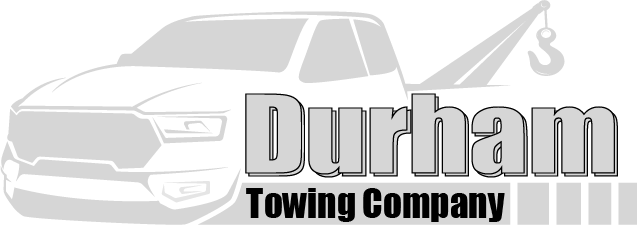That dreaded steam rising from under your hood while cruising down I-40 can turn a regular commute into a stressful situation. At Durham Towing Company, we’ve assisted countless drivers dealing with overheated engines along North Carolina’s highways. While we’re always ready to help at 919-805-3344, knowing the right steps to take can prevent engine damage and keep you safe until help arrives.
In this comprehensive guide, you’ll learn why engines overheat, what immediate actions to take, and how to prevent future occurrences. We’ll cover essential safety protocols and debunk common myths about engine overheating.
Understanding Car Overheating: More Than Just Hot Weather
Your car’s engine operates efficiently within a specific temperature range. When something disrupts this balance, problems arise. Let’s explore the main culprits behind engine overheating.
Primary Causes of Engine Overheating
The cooling system plays a crucial role in maintaining proper engine temperature. A failing water pump stops coolant circulation, while a malfunctioning thermostat can’t regulate temperature properly. Leaking coolant or a clogged radiator prevents proper heat dissipation. Sometimes, it’s as simple as a broken belt that drives the water pump.
A failing head gasket can also cause overheating by allowing coolant to leak internally. This often creates a vicious cycle – the leak causes overheating, which worsens the leak. Regular maintenance helps catch these issues before they become severe problems.
Winter Overheating: Yes, It’s Possible
Despite common belief, cars can overheat in cold weather. Winter overheating often stems from frozen coolant or a stuck thermostat. The engine works harder in cold conditions, especially with a compromised cooling system. Winter conditions can also mask overheating problems as drivers might not notice steam in cold weather.
The Critical Role of Oil
Low oil levels directly impact engine temperature. Oil doesn’t just lubricate – it helps cool engine components. When oil levels drop or oil degrades, friction increases, generating excess heat. Regular oil changes prevent this issue and protect your engine. Using the wrong oil viscosity can also contribute to overheating, especially during extreme temperature conditions.
Warning Signs You Shouldn’t Ignore
Your car typically gives several warnings before a serious overheating situation develops. The temperature gauge climbing into the red zone demands immediate attention. Steam from under the hood, sweet coolant smells, or sudden loss of engine power are critical warning signs.
Additional signs include:
- Ticking sounds from the engine
- Loss of power while climbing hills
- Coolant puddles under your parked vehicle
- Engine running rough or misfiring
Immediate Steps When Your Car Overheats on I-40
Safety First Procedures
When you notice overheating signs, turn on your hazard lights immediately. Carefully move to the right shoulder, choosing a flat spot away from traffic. Remember: a few extra seconds finding a safe spot beats risking an accident. Keep an eye on your mirrors and signal your intentions clearly to other drivers.
Cool-Down Protocol
Turn off your air conditioning and turn on your heater full blast. This action helps draw heat away from the engine. Don’t open the hood immediately – let the engine cool for at least 30 minutes. Never remove the radiator cap while the engine is hot; the pressurized coolant can cause severe burns.
If you’re in stop-and-go traffic, shift to neutral or park and slightly increase engine idle speed. This helps the water pump and fan work more effectively to cool the engine.
Preventive Measures to Avoid Highway Breakdowns
Essential Maintenance Checks
Regular coolant level checks and system inspections prevent most overheating issues. Examine belts and hoses for wear during routine maintenance. Look for coolant leaks, especially after parking overnight. These simple checks can save you from expensive repairs later.
Keep a maintenance log to track:
- Coolant flushes and replacements
- Belt and hose inspections
- Radiator service dates
- Thermostat replacements
Pre-Trip Vehicle Assessment
Before long highway drives, check your coolant levels and look for visible leaks. Ensure your oil is clean and at the proper level. Listen for unusual sounds from your engine, particularly whining or squealing, which might indicate a failing water pump or loose belt.
Professional Help: When to Make the Call
Some situations require immediate professional assistance. If your temperature gauge stays high after cooling down, or you notice coolant leaking rapidly, don’t risk further damage. White exhaust smoke or sweet smells often indicate a blown head gasket – a serious issue requiring professional repair.
Consider immediate professional help if:
- Temperature gauge remains in the red after cooling
- You spot large coolant leaks
- Engine makes unusual noises
- Check Engine light accompanies overheating
Emergency Safety Tips for I-40 Travelers
Highway breakdowns require extra precaution. Position your vehicle as far right as possible on the shoulder. Set up reflective triangles or flares if you have them. Stay inside your vehicle with the doors locked while waiting for help, especially at night.
Keep an emergency kit containing:
- Coolant and distilled water
- Basic tools
- Flashlight and reflective markers
- Phone charger
- Emergency contact numbers
Taking Control of Engine Temperature
Understanding and responding to engine overheating can prevent costly repairs and unsafe situations. While we at Durham Towing Company are always ready to assist at 919-805-3344, these preventive measures and response strategies help you handle overheating confidently.
Remember, your safety comes first – when in doubt, pull over and call for professional help. Regular maintenance and prompt attention to warning signs keep you moving safely through Durham, Chapel Hill, RTP, and surrounding areas.



